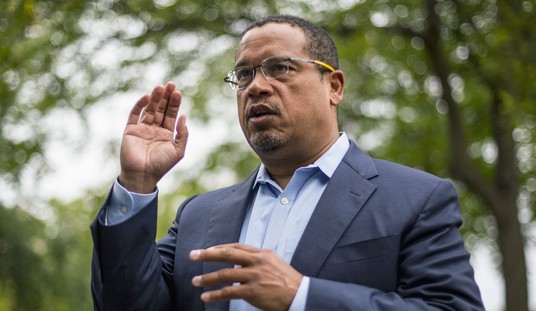What year is it?
Kate Brown clarifies below that the mask mandate doesn’t apply in all outdoor situations, like if you’re strolling around with members of your own household or walking your dog. It’s for outdoor gatherings involving multiple households, whether large public crowds or smaller private shindigs where people can’t distance. Still, even some Democrats are scratching their heads about it. “Have any medical experts actually recommended this?” wondered former Obama aide Tommy Vietor.
To answer his question: Why, no. “Current data suggest the risk of transmission of SARS-CoV-2 in outdoor settings is minimal,” reads the current CDC guidance. “In general, fully vaccinated people do not need to wear a mask outdoors. Fully vaccinated people might choose to wear a mask in crowded outdoor settings if they or someone in their household is immunocompromised.” If I recall correctly, in some interviews Fauci has nudged the vaccinated that they might consider wearing a mask if they’re in close quarters with others outdoors. But that’s as far as the feds are willing to go at the moment.
Is this COVID security theater, then? I thought we all got on the same page about the outdoors being very, very, very safe months ago.
Today we have 1,000 COVID-19 patients in our hospitals. I’m continuing to take actions to protect Oregonians and save lives.
Effective Friday 8/27, masks will be required in public outdoors settings where physical distancing is not possible, regardless of vaccination status. pic.twitter.com/0EU6bteTPU
— Governor Kate Brown (@OregonGovBrown) August 24, 2021
My guess is that Brown is worried about crowds at the Oregon State Fair, which is coincidentally set to begin this Friday, when the mandate takes effect. On the one hand, looking at these graphs showing the state of play in her state, you can understand why she’s nervous about a superspreader event. They’re in no position to have things get worse:

She’s going to let the Fair go on but insist on maximum precautions. On the other hand, there’s no reason to think standard cloth masks will do much to reduce transmission. And Chicago’s recent experience hosting Lollapalooza is encouraging, with just 200 or so cases out of nearly 400,000 attendees at the outdoor festival.
Maybe Brown’s calculating that by demanding people at the Fair mask up outdoors, they’ll be more likely to wear the mask in indoor areas too. That’s where transmission actually happens, after all. Although:
“It is much easier for people with the Delta variant, compared to people who were sick last year, to infect others around them,” said State Health Officer Dr. Dean Sidelinger. “This is because they have one thousand times more virus in their nose – which means that those around them are much more likely to get sick because this variant behaves so differently. We are starting to see instances where cases are clustering around events, like outdoor music festivals, that happen outdoors. Wearing masks in crowded settings – even outdoors – will help slow the spread of COVID-19.”
That’s some awfully slippery phrasing. When Sidelinger says they’re seeing transmission “around” outdoor concerts, does he mean at outdoor concerts? Or does he mean at indoor bars and restaurants visited by concertgoers after outdoor concerts? If he has evidence of outdoor transmission, he should show his cards.
There’s some good vaccination news today, by the way, courtesy of a pair of studies published by the CDC. The first comes out of California and compared hospitalization rates between the vaccinated and unvaccinated since May, when Delta began spreading there. Result: The vaccine really might save your life.
On May 1, in unvaccinated persons, the age-adjusted incidence (35.2 per 100,000 population) was 8.4 times and the age-adjusted hospitalization rate (4.6 per 100,000 population) was 10.0 times the rates in fully vaccinated persons (4.2 and 0.46, respectively). Partially vaccinated persons had a similar incidence (4.1) and hospitalization rate (0.27) as fully vaccinated persons. On July 25, the age-adjusted incidence in unvaccinated persons (315.1) was 4.9 times that in fully vaccinated persons (63.8); the rate among partially vaccinated persons was 46.8. The age-adjusted hospitalization rate in unvaccinated persons (29.4) was 29.2 times the rate in fully vaccinated persons (1.0); the hospitalization rate was similar in partially vaccinated persons (0.90) (Supplementary Table; https://stacks.cdc.gov/view/cdc/109087).
As time went on and Delta became dominant, the hospitalization gap between the unvaxxed and vaxxed tripled in size. That’s counterintuitive in a way, since the vaccinated are more susceptible to infection by Delta than they were to previous strains. In fact, according to this study, the unvaccinated had higher viral loads on average back in May but by July viral loads in the vaxxed and unvaxxed were similar, confirmation of the famous Provincetown study of how Delta has probably made the vaccinated infectious to others. All of that being so, shouldn’t the gap in hospitalizations between the two groups have also gotten smaller, not larger?
Well, no. What the data’s telling us is that if your immune system is primed with antibodies to resist an invasion by Delta, you may not be able to fend it off before it causes symptoms but you should be able to fend it off before it reaches the hospitalization stage. That’s much less true with the unvaccinated, unfortunately. The more contagious variant is running roughshod over the unvaxxed.
The second study also confirmed previous CDC findings. The vaccines did lose some efficacy against Delta but retained a solid degree of protection, 66 percent versus 91 percent against previous strains. Vaccination also made an infected person less likely to have symptoms than an unvaccinated one, although unfortunately not as unlikely as one might hope. Ninety-five percent of the unvaxxed who caught COVID had symptoms; 75 percent of the vaxxed with breakthrough infections did too. An immunized person will eventually tame Delta, but not without some scratches.
I’ll leave you with this data from NBC’s recent survey identifying vaccination rates by different demographic groups.
Who's been vaccinated? And who hasn't?
Our latest NBC News poll finds a revealing demographic breakdown: https://t.co/bEYUcpFp6U pic.twitter.com/R01V9gtyL3
— Mark Murray (@mmurraypolitics) August 24, 2021








Join the conversation as a VIP Member